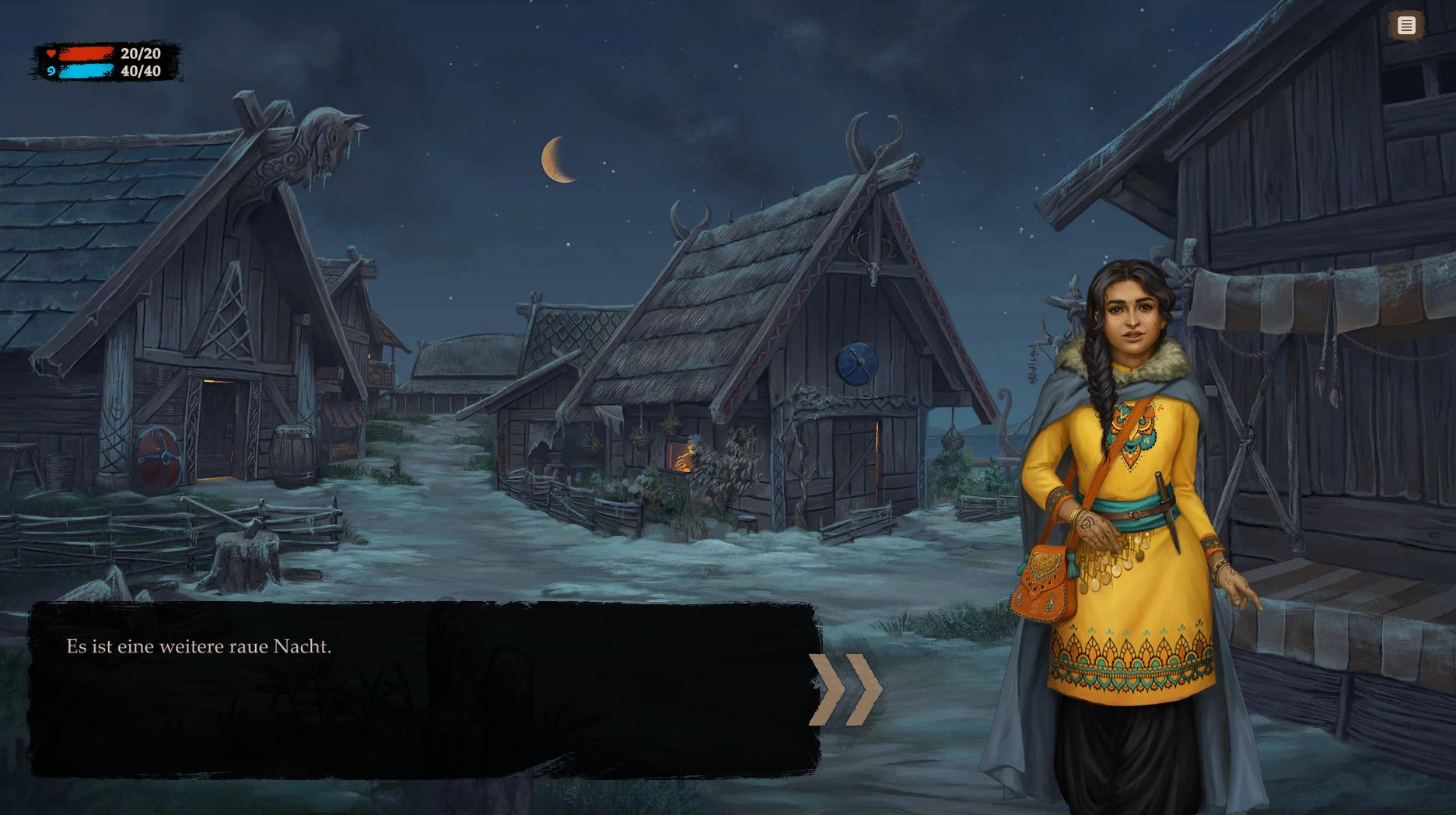Ulisses Spiele and developer Owned by Gravity recently announced Forgotten Fables: Wolves on the Westwind, a new visual novel based on the popular pen-and-paper role-playing game The Dark Eye. The game is slated to release first for PC in May and shortly thereafter for iOS devices.
At the same time, it is the first game of The Black Eye for which Ulisses Spiele is not just the licensor. The company publishes the title on its own and that should only be the start. Other games in the universe of Das Schwarze Auge and other fantasy IPs from the publisher are already in the works.
After the announcement, I wanted to know a little more about what to expect in Forgotten Fables: Wolves on the Westwind. Jan Wagner, Head of Digital Games at Ulisses Spiele, answered questions.
Do you take up familiar elements from the template or the DSA universe, or are the story and the characters completely new?
Jan Wagner: We have opted for a healthy mix here. Of course we’ll include familiar elements, a good portion of the story takes place in and around Thorwal and familiar locations will definitely pop up for savvy DSA connoisseurs. But we intentionally wanted to tell new characters and stories that didn’t come from the previous range of publications, nor necessarily feel like one typical role-playing session, but using the added depth of a book and the characters in it.
How much freedom do you have in designing your story, characters and game world?
Jan Wagner: We have worked closely with the editors of the Black Eye. After all, one of the advantages of the current model is that we, as a publisher, develop our video games ourselves and don’t sell licenses to external studios as before, so we keep our content consistent with each other across every medium and contribute to the further expansion of the world, from books to rolling – to the video game. We took liberties with the themes: Wolves on the Westwind is not one of the usual adventure stories from role-playing games, but gives the protagonists and their stories more space. There are no classic, slick hero characters in Wolves on the Westwind. A significant part of the story revolves around the characters’ self-doubt and fears and how they deal with them, to themselves and to others. So these are quite serious topics where the players decide more than just “which monster do I hit and how”.
To what extent do you address different target groups? How detailed is it for DSA veterans, how beginner-friendly for those who haven’t had anything to do with DSA before?
Jan Wagner: We very consciously addressed a broad audience. Of course it helps to know the world a bit, but whether you’ve been with DSA for 40 years, a ten-year break in between, or are new to Aventuria, the game is equally playable. We also only have a minimal rule share, which means you don’t have to have a DSA be ableto play Wolves on the Westwind.
How extensive are the RPG elements in the game? Can you give us an example of a situation where you can use something like a spell and how it works?
Jan Wagner: The RPG elements open up additional dialogue options, for example, in a fight with our sorceress it is much easier to defeat the opponent with a “Blitz you find”, but you have to spend astral points. Another possibility is, for example, by detaching a branch with a gust of wind that falls into my pursuers. But such a spell or a maneuver does not always help the situation, so you have to think about what to use when and be careful with your values. In combat you will also receive wounds and can even die if you run out of life points.
We’re talking about “multiple alternate endings,” can you give an exact number? At how many points does the player influence it and can you recognize these situations?
Jan Wagner: The actual ending is influenced by a variety of options. For one, it depends on which companions you have with you at the time. This decision is partly visible to the players because you can try to persuade some of them to come along. On the other hand, you have to decide during the story which relationships you want to deepen. This also influences who you have by your side during the course of the adventure. Finally, in the direct confrontation with the enemy on a psychological level, there are some decisions that affect the course. All in all, there are over a dozen ways this can be done, with the result being win or lose, of course. But who and how is left behind is important. Do you sacrifice a friend? How far are you willing to go to win?

If I understand the press release correctly, some side quests are only available when certain choices are made. Is that correct and if so, how many such side quests are there?
Jan Wagner: These are less quests and more story sections related to specific companions. You can deepen the relationship with them and this in turn opens up additional options in the respective adventure locations. You definitely can’t go through all 18 sidelines in one game. If you want to play through all the story sections, which also differ depending on the main character you have chosen, you will need at least five to six attempts.
Are you planning further implementations, for example for Switch and other consoles?
Jan Wagner: We currently want to implement the concept for PC and iOS. However, we do not want to rule out further ports for the future, the Switch would indeed be a very suitable platform.
The post This is how Forgotten Fables wants to appeal to DSA veterans and newcomers alike appeared first on Gamingsym.
